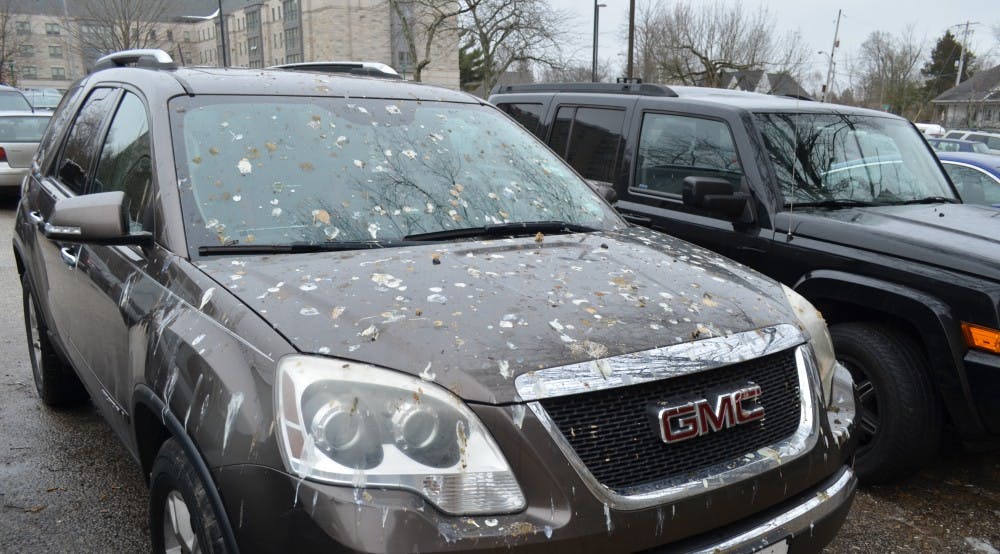Walking back from the dining hall in Forest Quad to her own dorm, freshman Andrea McCallister told her friend she was surprised she hadn’t been pooped on yet.
Thirty seconds later, she felt something on her head and began running down the walkway, screaming all the way.
McCallister said the crows freak her out a little bit. She estimated there were 1,000 crows in the trees.
As it gets darker, it becomes harder and harder to tell how many crows there are. Later that evening, Forest Quad resident Isis Smith estimated there were between 80 and 150 crows out.
“Now I'm even more paranoid because I have bird poop in my hair,” McCallister said. “I thought they should fly south.”
Far above the sidewalks that crisscross campus, crows line the trees in thick rows of black, forcing lighter branches to droop beneath their weight. The birds sway up and down in the stiff winter breeze. Cawing at one another and those passing under them, their presence is ominous.
“It is creepy, but there is a part of me that’s more concerned about the poop,” freshman Ellie VanBuskirk said.
Somewhere between 10,000 and 20,000 crows have descended on Bloomington, estimates Jim Hengeveld, a senior lecturer in the biology department, in an email. Crows come to urban areas for the slightly warmer temperature and lower chance of encountering predators.
In their wake, the birds leave behind smelly sidewalks, pooped-on students and cars desperately in need of a wash.

Tuesday evening, the crows begin to creep in from over the horizon. In a few minutes, they fly over by the hundreds. The birds fill the sky with dots of black in sharp contrast against the blue of a late January sky.
The crows roost in large numbers to learn where the best feeding areas are from other crows, Hengeveld said in an email.
“Large roosts can act as an information center,” Hengeveld said in the email.
Perched on the trees lining the walkway between Read Center and Forest Quad, the crows have chosen a particularly nefarious spot to roost. Many students take the walkway to get to the dining hall in Forest.
Bird poop from the night before still coats the ground in splotches like a failed attempt at an abstract pointillist painting.
Walking under the bird-lined branches, it’s easy to mistake the sound of bird poop plopping on pavement for light rain. Looking up to see if it’s actually raining can be dangerous.
“Animals in general don't scare me,” Smith said. “I just don't want to go into their territory, because you know, that's sacred."
Some students stop and snap pictures on their phones. Others clap or make loud noises in vain attempts at getting them to fly away. Still more put on hoods to shield themselves before running through the gauntlet of poop.
Occasionally, a hundred take off from the trees. The mass of wings sound like the whooshing blades of a helicopter in flight.
When mid-morning comes, the branches are barren. The crows will be back in the evening, but for now they’re out searching for leftover grain in nearby cornfields. Hengeveld said in an email crows also eat fruit, earthworms and any carcasses they can find.
The birds are here to stay until the end of March, Hengeveld said. There's no getting rid of them, so for now students will just have to put up with this crap.





